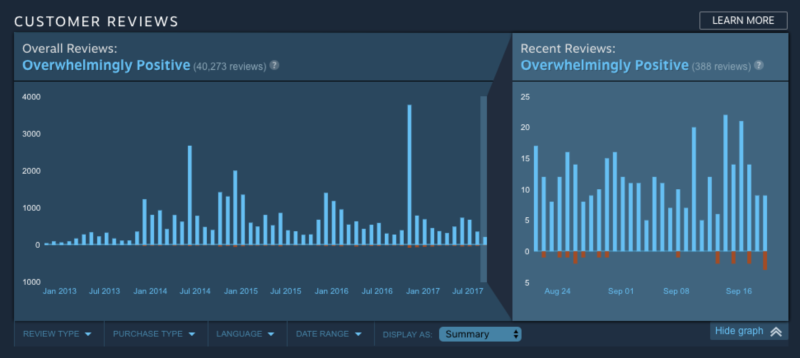In the recent news, Steam users have been found out to “Review Bomb”, that is, players posted a lot of negative reviews on Steam to lower a game’s overall review score, on the big titles such as GTA V for banning mods and DOTA 2 because there’s no Half-life 3
Review Bombing is a big issue that must be dealt with extreme delicacy. People criticize a game for reasons that are outside the game altogether. They may criticize an awesome game for it hurt their believes and faith. Other times they may be prompted to do such a thing by their ideals as was the case when famous YouTuber Pewdiepie encouraged his subscribers to leave bad reviews on steam for Firewatch, a delightful game that had earned the respect and faith of many critics and players alike in the past. Yet, one minor mistake by the developer while dealing with such issues may result in the closure of developer at large, and then it wouldn’t matter if they had made great games or large fan base in the past.
If you take my word, review bombing does not bring any good to those angry gamers who leave negative reviews. They are merely demoting a fantastic game such as GTA V or DOTA 2. It is crucial for players to understand that Developers such as Rockstar and Valve (who I do not regard as a developer anymore) cannot abandon their agenda and five-year plans just after some bad reviews. Yet, developers must give heed to what their consumers have to say about them.
But when such a situation arises, the publisher or the distribution must take certain innovative steps to counter the problem, for which it is essential to know the root of the problem.
Valve, the owner of the video game distribution channel ‘Steam’ came up with an innovative solution to counter this problem. So what is the solution to this problem? Histograms. What is it you ask? Here are Valve’s own words on solving the recent problems with review bombing vis-à-vis Histograms.
“Starting today, each game page now contains a histogram of the positive to negative ratio of reviews over the entire lifetime of the game, and by clicking on any part of the histogram you’re able to read a sample of the reviews from that time period,” Valve said. “As a potential purchaser, it’s easy to spot temporary distortions in the reviews, to investigate why that distortion occurred, and decide for yourself whether it’s something you care about. This approach has the advantage of never preventing anyone from submitting a review, but does require slightly more effort on the part of potential purchasers.”
I believe that this might be able to solve the problem in the short run. There is no doubt that I rely on ratings and reviews by other players before I make a purchase on Steam. The histogram will convey when the ratings of a game took a dive under the bar, and from there on it would be a matter of seconds that we discover why. In such a way, the overall score of a game may deplete in case of review bombing, but It’d not affect its potential buyers.
Yet, I fail to believe that this is a viable solution for a longer run. If you look at that big picture, the players and communities are the business of a producer. And if they’re unable to maintain their fan base’s happiness levels. that day wouldn’t be far when members of the community will abandon it one by one.
So all in all, the valve’s solution to review bombing is a great strategy for a short run. But for the marathon, the producers and distributors must collaborate and solve the issues presented to them by their fanbase.
Register with us for the best in gaming, and join us for video game discussions on our forums.



